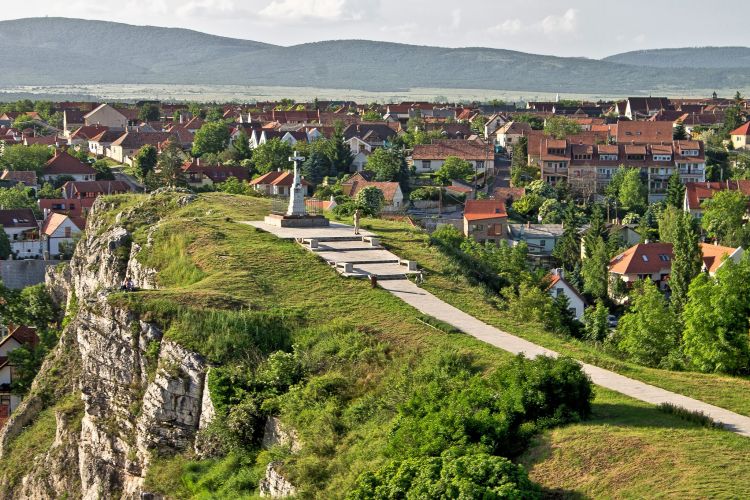Do you sometimes wonder as you walk along a path what might lie metres under your feet?
Obviously soil, stones, worms and sometimes even a mole. What stones, worms and moles have in common is that from the surface, we don’t even think about the fact that they are underneath us. Yet what if we were to say that there is more than just these living and inanimate things beneath us? Our curiosity is immediately aroused by this.
There is a place in Veszprém, a legendary cliff that holds many of these legendary secrets, and we can take this literally too.
The locals know this narrow dolomite cliff occupying a large strip of the northern side of the castle simply as Benedict Hill.
It offers an unparelled panorama of Veszprém and the Bakony. Of course, there were times when the view was the least important thing when you were climbing a cliff. Some theories have it that our ancestors had already been on the cliff top, but there are more definite recollections of the Benedict Hill from the Middle Ages. Of course, some of this is the usual conjecture. First of all there is its name, which is said to have been given by the locals after the missionaries from the Order of St Benedict. They were thought to have built a small chapel on the top in the 13th century. Later, the Turks also used this strategic point, which was exceptionally useful from a military perspective, to their advantage, firing their cannons at the castle from here. After the Turks left, there was a watchtower on the cliff, and it was then used as a cemetery for a long time. The current cross also commemorates those who were buried here on Benedict Hill. However, Benedict Hill holds even deeper secrets. Right in its very heart, since a cave was carved into the rock, which was used among other things as a shelter and a makeshift hospital during World War II. If you keep your eyes peeled as you walk along the cliff, you can still find its entrance.
But be warned, the panoramic view from Benedict Hill requires the use of your leg muscles. Whether you try to reach the cliff from the castle or the Séd Valley, you’ll need to climb quite a few steps.

